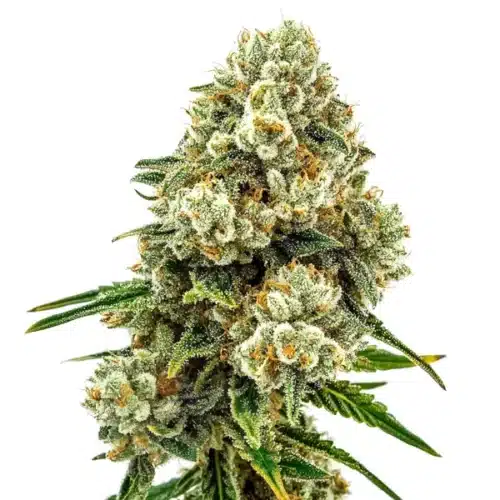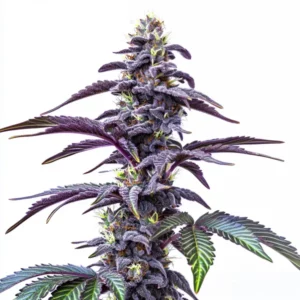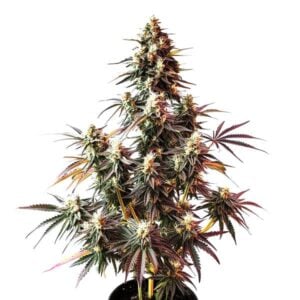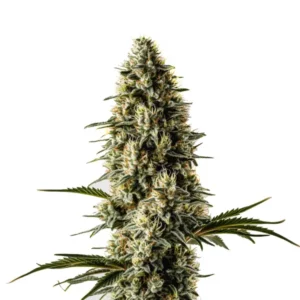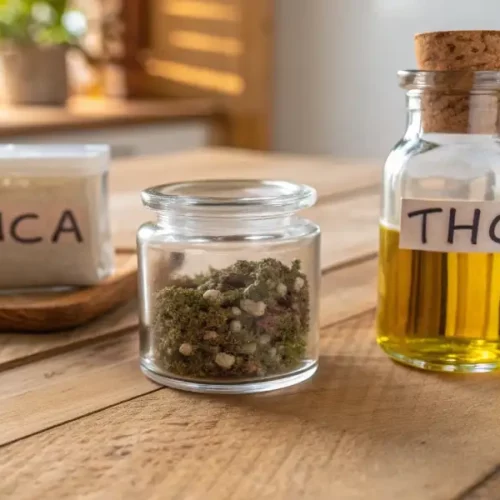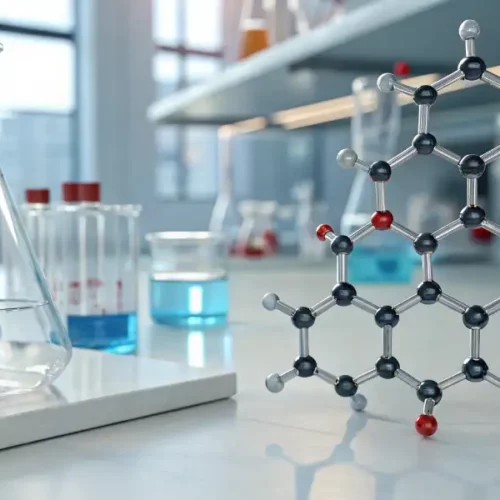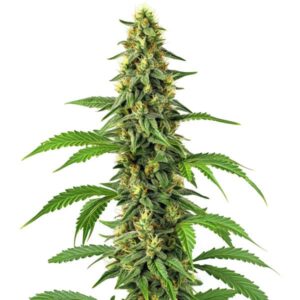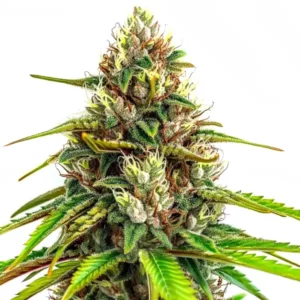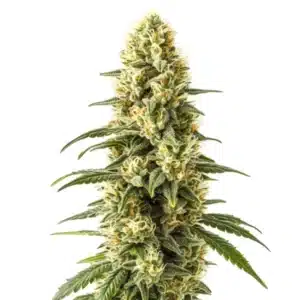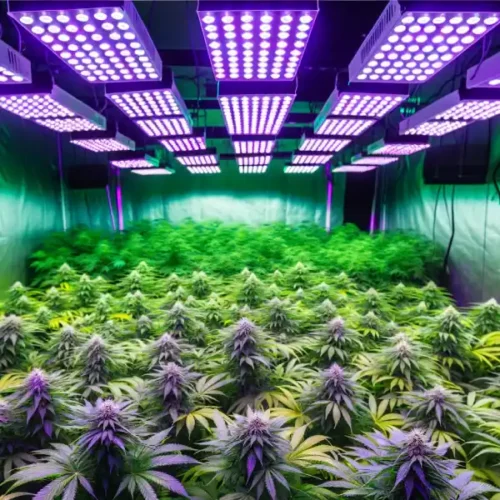It is normal for gardeners, no matter how much experience or technical equipment they have for growing, to suffer a setback and their plants can get sick. It is normal in indoor cannabis growing that problems may arise when cultivating. Every grower who has encountered these common problems in cannabis cultivation understands the sinking feeling that accompanies the discovery that something is not quite right with their plants.
Normally, it is not easy to detect diseases that plants may have and it requires time and analysis of the plant to draw certain conclusions. Although it may not be the most fun aspect of growing cannabis, recognizing these problems and discovering effective remedies is an essential part of the learning process. Now, let’s explore the most common problems indoor growers may face and seek some solutions for these problems.
Recommended Strains
ACDC (1:18)
 THC: 0.5% - 0.8%
THC: 0.5% - 0.8% Type of seed: CBD
Type of seed: CBD Phenotype: Mostly Hybrid
Phenotype: Mostly Hybrid Day to flower: 8 - 10 weeks
Day to flower: 8 - 10 weeks
Acid Diesel
 THC: 18% - 20%
THC: 18% - 20% Type of seed: Feminized
Type of seed: Feminized Phenotype: Mostly Indica
Phenotype: Mostly Indica Day to flower: 8 - 10 weeks
Day to flower: 8 - 10 weeks
Nutrient Deficiencies
Nutrient deficiencies are one of the most common symptoms of problems in indoor cannabis growing and this means that the plant cannot acquire the nutrients it needs for optimal development. Nutrient deficiencies manifest when plants have inhibited growth, discoloration of leaves and reduced crop production. The most common nutrient deficiencies are those of nutrients such as nitrogen, phosphorus, and potassium. There are also more specific deficiencies that usually occur in more advanced crops or with more experienced gardeners since they usually grow under other parameters or nutritional supplements.
Promos & Deals
PH Imbalances
First, let’s understand pH. pH is a measure of acidity or alkalinity, ranging from 1 to 14. Monitoring pH is essential for water adequacy and plant nutrition. Natural water is neutral at a pH of 7. Below 7, water is acidic, with high concentrations of metals and potential toxicity. Above 7, the water is alkaline, with a rich mineral content.
Cannabis plants must maintain a specific range on the pH scale as pH affects the availability of nutrients that are necessary for plants. The pH in soil should be between 6 and 7. In hydroponics, the pH should range between 5.5 and 6.5. Plants can be affected if soil pH levels are incorrect because it inhibits the plant’s nutrient uptake, causing nutrient deficiencies.
Organic crops can self-adjust pH through microorganisms, but growers using liquid mineral (inorganic) nutrients must adjust the pH when feeding their plants.

Overwatering and Underwatering
Excessive or insufficient watering causes problems for weed plants. Excessive irrigation is usually a relevant factor in cultivation for novices because they tend to give more water than the plant needs. On the other hand, poor irrigation or lack of water means that weed plants do not have enough nutrients to be able to develop both growth and flowering.
Pest and Disease Management
Pests and diseases are usually the worst nightmare for growers. Fungi, pests, and various pathogens can affect cannabis plants, being so dangerous that they can destroy entire crops. Below, we have listed our recommedations on how to prevent diseases, use the indicated control systems, and identify the most common pests and diseases.
Identifying Common Pests

When identified early, cannabis pests can be effectively controlled. When pests become more prevalent in crops, you may have a serious problem on your hands.
Indoor growers use UVB lighting systems which often prevents some pests in crops.
One of the most common weed pests is the Cannabis aphid (Phorodon cannabis). Cannabis aphids feed on the fluid of the plant and are usually seen on the undersides of leaves or stems of plants.
Mites are another pest that are commonly found on marijuana plants. The broad mite causes new leaves to appear twisted. The cyclamen mite (Phytonemus pallidus) causes the leaves to twist upward and then this progresses to distorted growth. The tarsonemid mites are smaller than the spider mite.
In order to identify and eradicate the most common cannabis pests at an appropriate time, it is necessary to inspect the plants and carry out analysis on a daily basis. Using magnifying glasses or other instruments can allow you to identify small mites and other types of pests.
Natural and Chemical Pest Control Methods
We know different proactive measures that marijuanas plants breeders can take to prevent infestations. Two simple measures to avoid pests on cannabis plants are the use of beneficial insects such as ladybugs and/or growing with other plant species or share crops.
We do not recommend using chemical pesticides because they are harmful to users of plants, vegetables, and also to cannabis. For this reason, it is best to use natural pesticides that can be made at home.
Neem oil is organic and is used to prevent and counteract the negative effects of pests, insects, and fungi such as powdery mildew. This type of fungicide helps prevent plants from being damaged by pests and also does not damage the environment like other types of chemical fungicides can do.
You can use a garlic pesticide since this fruit is recognized as healthy for cannabis plants and also helps combat insects, pests and some diseases. It is important to use it as a spray to cover the needs of the plants.
Tomatoes contain certain non-toxic components for humans that help combat pests such as aphids, among others. For this reason, it is recommended to have an indoor cannabis crop with some small tomato plants and use it as an organic pest repellent.
Aphids, whiteflies, red spiders, and ants are some of the insects and pests that can be inhibited with the terpenes of essential oils that generally have pine, pepper, or eucalyptus terpenes. For this reason, we recommend using an essential oil of this type in case there is the presence of pests or insects on your indoor cannabis plants.
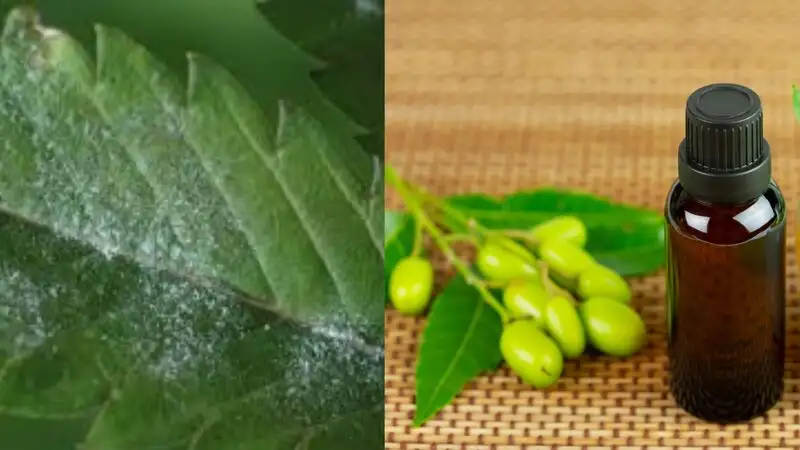
Disease Prevention Strategies
To prevent pests and diseases in cannabis plants, you can use organic preventive products against marijuana pests. Not only do you achieve a highly effective preventive effect, but you also stimulate the growth of the plant, enhance its natural defenses, improve and ensure the soil quality and help to achieve higher quality crops.
It is recommended as a strategy to use pest preventive products that come from grow stores during the plant’s vegetative period. Remember to use minimum doses and try not to use them as much as possible. During the flowering season, avoid using these types of products because they can alter the natural aroma and flavor of the cannabis plants, leaving a bad taste and aroma in the buds.
Advanced Techniques
Cultivation techniques have evolved over time, which is why today we have advanced cultivation techniques that help improve the production levels of cannabis plants, especially in indoor cultivation. In addition, these advanced cultivation techniques also help to improve the quality of cannabis in terms of flavor, effect, aroma. and terpene levels.
Hydroponic Systems for Indoor Cannabis
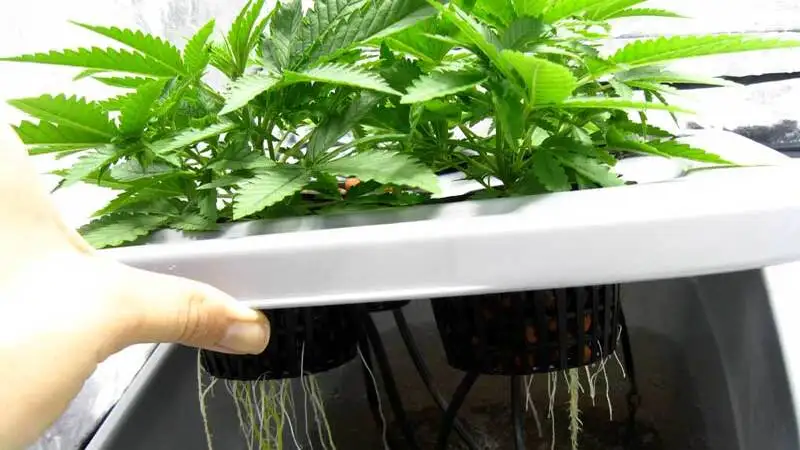
As the name suggests, hydroponics is a growing method that uses water as a medium. In a hydroponic system, plants are grown in containers or baskets filled with an inert growing medium and suspended over a reservoir of water. Water contains all the nutrients necessary for plants to survive and thrive and aerating stones are used to oxygenate the tank. These two elements are essential in an indoor hydroponic cannabis growing kit.
This fundamental model takes on many different forms and systems, with various growers favoring different setups. Hydroponic cultivation offers numerous advantages, which we will explore shortly. But first, let’s dive into the history of this intriguing art form.
Hydroponic systems work with electric air pumps and air stones to provide the roots with all the ingredients necessary to maintain good plant health. Because they use electronic devices, these systems can be automated to save work for the grower.
There are different types of hydroponic cultivation, here we list the most used among marijuana breeders.
The Kratky Method: The Kratky Method makes hydroponic growing affordable, easy, and accessible. To set up this system, growers can use a number of materials, such as plastic buckets and boxes. The plants grow in mesh containers inserted into a lid, and the roots descend into the nutrient solution below.
DWC System: DWC systems are the active version of the Kratky method. They have a single reservoir completely filled with the nutrient solution. The plants grow in mesh containers that are inserted into the holes of a polystyrene sheet that floats on the surface. Unlike the Kratky method, DWC systems do not require leaving an air gap so that the upper roots can breathe; Instead, the system uses an air stone to constantly aerate the solution.
Ebb and Flow System: The ebb and flow system (also known as flood and drain) involves causing water to flow and drain. Several buckets are used suspended over a culture tray with an inlet and outlet for water. Both channels are connected to an external reservoir that contains fertilizer, an air stone to aerate the water supply, and a pump to push the water into the growing tray. In this way, the roots are not continually submerged in water, but are periodically flooded with fresh, oxygenated, and nutrient-enriched water. When the cycle ends, the water returns to the external tank.
This system allows for periodic feeding. When the grow tray is empty, growers can tend to the roots and harvest their plants.
Aeroponics: Aeroponics is perhaps the most futuristic version of hydroponic crops, and consists of spraying the air with water to optimize aeration and hydration. The plants are placed on top of a large water tank that is only 25% full. At the bottom there is a pump that sends water to atomizers located under the roots. This fine mist constantly soaks the roots, ensuring that the plants receive large amounts of air and water at once.
Screen of Green (SCROG) Method

Using SCROG for marijuana cultivation involves the use of a horizontal mesh or screen to guide the growth of marijuana plants. With the use of the mesh, the plants orient their lateral branches in such a way that larger and more robust buds are achieved because they receive the same amount of light. In other words, the lateral buds grow as if they were central ones.
You can also see how the growth of cannabis plants is much more uniform and therefore, the size of the plants is controlled in more optimal ways. As a result, better quality buds are obtained and obviously, better harvests because the plants produce more and heavier buds.
For this type of crop, it can be started from seed or cutting. Normally clones are the most used, although from seed you ensure that you have more resistant, long-lasting plants from which you can get more 1 crop after harvest.
Cannabis Breeding and Genetics
Cannabis cultivation has undergone significant transformation over the past two decades. Scientific advancements and cutting-edge technology have facilitated the exploration of cannabis genetics at a faster and deeper pace than ever before. Whether you desire a THC-rich cannabis seed variety (or even THC-free!), you now have more options than ever.
Cannabis genetics are continually enhanced, particularly by high-quality, high-tech cannabis seed producers. In the coming years, new cannabinoids will emerge, sparking significant medical interest, while medical researchers will strive to determine which cannabinoids are most effective for specific medical conditions. Keep an eye out for cannabis seed companies with the best resources and the utilization of the most modern research tools and techniques. The finest cannabis genetics are obtained through patient and meticulous research… not by chance.
Of course, the best cannabis seeds cannot reach their full potential unless they are cultivated in optimal conditions. It’s important to note that there are numerous environmental factors that will have a significant impact on the final outcome of your cannabis seeds. Here are a few.
Techniques for Increasing Yield
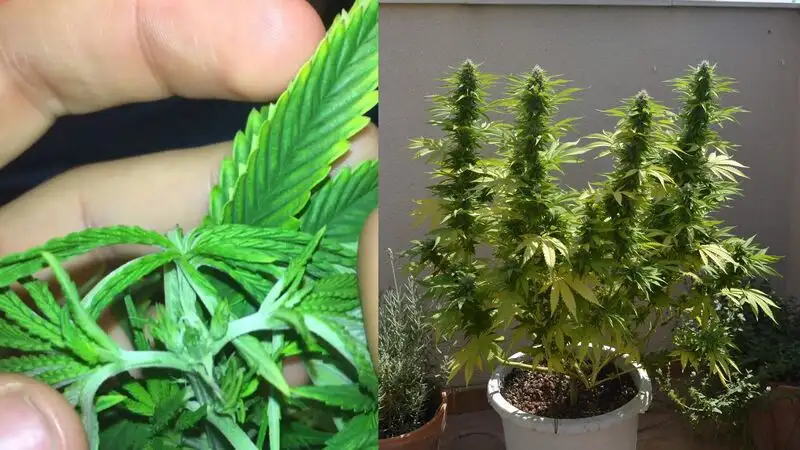
After months of planning and the consumption of water and energy, you’ll want your plants to yield as many flowers as possible. First and foremost, locate a discreet place for cultivation. You can choose to plant outdoors, benefiting from natural sunlight and atmospheric conditions. However, indoor cultivation is often more secure, as it provides greater control over the environment. Regardless of the method chosen, there are several key principles to consider in order to maximize your harvest.
The first and most crucial aspect is the genetic makeup of the variety you intend to grow. Fortunately, we offer a selection of robust and high-yielding seeds for your convenience. There’s also the matter of whether your seeds are autoflowering or photoperiod-dependent. If they are photoperiod-dependent, careful lighting management is essential, and you can also employ techniques like LST and supercropping to enhance bud production. Get your seeds here at Blimburnseeds.com and get ready for your indoor cultivation!
Supercropping
Also known as High Stress Training (HST), the super cropping technique is a method to enhance plant growth and productivity by subjecting it to high levels of stress. To carry out this technique, certain upper branches of the plant need to be gently broken at a specific stage of development in order to bend them, thus increasing the amount of light the bud receives and reducing shaded areas on the plant. This effectively leads to an increase in the harvest.
To execute super cropping correctly, one must only break the surface fibers of the plant until they allow the stem to be bent without completely snapping it, as the plant is unlikely to fully recover if it does.
This technique offers significant benefits for cultivation: it strengthens the plant’s defense system against both pathogens and potential external stressors, while also increasing trichome production, resulting in a production boost of 10% to 20%.
For the successful application of this controlled stress technique during the growth phase, the plant must have reached a minimum level of development to endure it and recover easily. It’s recommended to wait between 15 days and a month until the plant reaches 30 cm (~12 in). Waiting a bit longer is acceptable, and this method can be applied for the first time from 3-7 days before flowering begins.
Low-Stress Training (LST)
Low-Stress Training (LST) is a technique employed to regulate the size and shape of marijuana plants without inducing significant stress. This method avoids the need for cutting or pruning and instead involves gently bending the branches to enhance light exposure, ensuring uniform illumination for all branches. Using this technique in indoor cannabis growing is perfect to control the size of the plants and maximize production.
LST results in smaller plants with robust secondary bud development, making it particularly suitable for indoor cultivation. This technique exposes secondary buds to a higher light intensity, leading to the formation of multiple smaller colas or buds, as opposed to a single dominant one.
To keep the plants at a certain size, gently bend the taller branch stems downward and secure them to the container. This encourages the development of multiple branches from the lower buds, which benefit from increased light exposure. The goal is to gradually bend the plant until all branches reach the same height.
By implementing LST, the branches grow evenly and remain at the level of a compact shrub. Consequently, it is an excellent approach for discreet indoor growing or outdoor cultivation when size control is crucial. Ultimately, LST for marijuana plants can serve the following:
- Produce denser buds on lower branches.
- Enhance overall yield by promoting lateral branch development, particularly in indoor setups.
- Minimize vertical growing space, improving cultivation efficiency.
- Control plant size.
Enhancing Cannabis Flavor and Potency

We’re all aware that the flavor and potency of a Marijuana plant are largely attributed to its genetic heritage. Hence, there are plants that offer a mild effect, a moderate effect, or a strong effect when consumed. The same principle applies to their taste and aroma, as some Marijuana plants exhibit a much more pronounced fragrance and flavor than others, with genetics playing a pivotal role in this regard.
However, there is something that cultivators can easily do to enhance all these properties significantly. You’ll be surprised to learn that we can greatly increase the potency, flavor, and even the aroma of Marijuana plants.
THC is one of the many cannabinoids found in marijuana within its trichomes, to be more precise… in the head of the trichomes. spray Terpenes are responsible for the flavor and aroma of our marijuana plants, and they are also found in the trichome heads. So, to enhance the potency, flavor, and aroma of a marijuana plant, all we need to do is stimulate it to produce many more trichomes (resin).
It’s a straightforward process; we just need to increase the amount of UV-B rays the plant receives during the flowering cycle. UV-B rays effectively destroy trichomes and seeds, breaking them down. This is why when a plant senses that it’s receiving a higher than usual amount of UV-B rays, it responds by producing many more trichomes to protect itself. It’s its natural way of safeguarding the seeds (even if there are no seeds).
Using specific types of lamps is a common practice. During the growth stage, low-consumption or Metal Halide lamps are typically used, while the flowering cycle calls for Sodium Vapor lamps. This strategic choice is made for several reasons. Sodium Vapor lamps emit a higher amount of lumens, providing more light than Metal Halide lamps. Moreover, their light spectrum, which leans towards the reddish end, encourages the development and maturation of buds. As a result, utilizing Sodium Vapor lamps during flowering ensures a bountiful harvest.
Metal Halide lamps, on the other hand, emit a significantly larger quantity of UV-B rays than Sodium Vapor lamps. Should one decide to complete the entire flowering cycle with a Metal Halide bulb instead of Sodium Vapor, the outcome would be a less abundant but higher quality harvest. The plants would produce a greater quantity of trichomes, leading to a higher concentration of cannabinoids, including THC, as well as a richer variety of terpenes.
While this approach may yield smaller and less dense buds, the trade-off is an increase in potency and flavor. For those seeking to strike a balance, there’s another option – using a Sodium Vapor bulb for most of the flowering cycle and transitioning to a Metal Halide bulb during the last two weeks of flowering. This way, you can achieve a middle-ground result: a decent quantity of buds with an added dose of trichomes.
For cultivators using three or more lamps, a practical ratio to achieve these results is using two Sodium Vapor bulbs and one Metal Halide bulb throughout the flowering cycle (2:1). Additionally, contemporary LED lights have gained popularity for both the growth and flowering stages. To determine which type of LED offers the best spectrum, particularly in terms of the UV wavelength suitable for cannabis plants to enhance their potency and flavor, it is advisable to consult the seller or manufacturer of the LED lamp for detailed technical information to facilitate comparisons.
spray Terpenes and Cannabinoids

Cannabinoids are chemical compounds that regulate the endocannabinoid system (ECS). They are categorized as phytocannabinoids, indicating that they are produced by plants like cannabis, or endocannabinoids, which are created by the human body. Research indicates that there are approximately 150 different cannabinoids. Some cannabinoids and man-made synthetic compounds mimic the various effects of cannabis, known as “cannabimimetics.”
On the other hand, terpenes are a group of aromatic hydrocarbon-based compounds produced by many plants, with the most famous being the cannabis plant. They are often considered responsible for the flavor and scent profiles of cannabis; however, studies suggest that they may also have profound therapeutic effects. There are approximately 30,000 different terpenes across all plant species, with 220 of them existing in cannabis. One of the comparative advantages of indoor cannabis growing is that you can help more easily stimulate the production of terpenes in plants.
Flushing Before Harvest
Flushing a plant involves the use of pure water to actively eliminate any nutrients from the soil. A substantial volume of water is passed through the soil and regularly drained away. Over time, this process washes away any minerals and nutrients in the soil, resulting in clean soil.
Why would you want to remove all the minerals from the soil? Doesn’t this harm your crop? In fact, it significantly benefits your crop. When the soil’s nutrients are depleted, it compels your cannabis plant to utilize any remaining nutrients it still contains. This process is analogous to the human body. We consume a substantial amount of food, and what we don’t use is stored as fat. In extreme circumstances, when food is scarce, the body relies on these stored fat reserves for energy.
Proper Drying and Curing
Drying and curing cannabis is crucial for a high-quality harvest. There are various methods for drying cannabis:
Cardboard Box Drying: Place manicured buds in cardboard boxes, add a hygrometer to monitor temperature and humidity, and put them in a grow closet or drying room.
Hanging Buds: Cut branches, trim sugar leaves, and hang them upside down in a closet or grow room. Use a fan for airflow if possible.
Drying Racks: Spread manicured buds evenly on drying racks and monitor humidity using hygrometers.
Drying Net: Hang the net and spread buds on it in your drying space.
The drying time depends on factors like bud size, cutting method, temperature, humidity, and airflow. Typically, it takes 7-12 days. You can check if buds are dry by bending a small branch; if it breaks, they’re ready for curing.
Curing is essential for flavor and quality. Manicure buds when they’re fresh or before curing if they’re dry. Place dried buds in wide-mouth jars, leaving room for air. Store in a dark, dry place, and check daily for two weeks.
Ensure proper drying and curing for the best cannabis quality.


